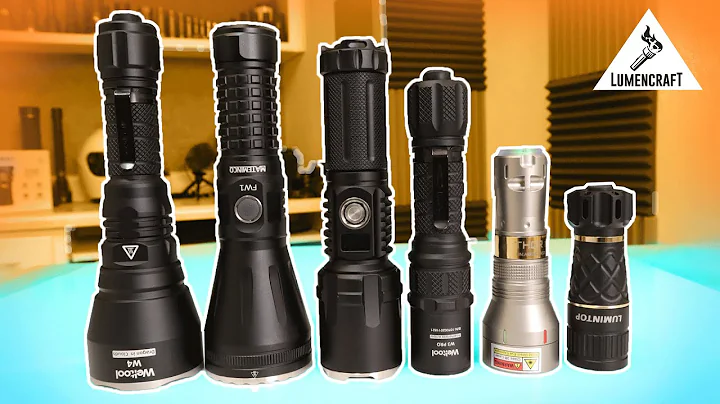Easy Guide: Installing REDARC BCDC Battery Charger
Table of Contents
🔹 Introduction
Installing a Redarc BCDC 1225D is a fundamental process for efficiently charging your auxiliary battery in a vehicle, such as a Toyota Land Cruiser Sahara. This step-by-step guide will provide you with comprehensive instructions to ensure a successful installation.
🔹 Tools Required
To complete the installation, you will need the following tools:
- Spanner set
- Socket set
- Screwdriver set
- Side cutters
- Soldering iron
- Cable cutters and crimpers
You will also require the following components:
- Redarc BCDC 1225D
- FK 40 fuse kit
- Conduit or split tube
- Heat shrink
- Electrical tape
- Terminals
- Lugs
- Cable ties
Depending on your specific battery type and vehicle make, you may also need additional accessories such as a BCDC mounting bracket, battery tray, and battery terminals.
🔹 Installing the Battery Tray
One of the first steps in the installation process is to install the battery tray according to the manufacturer's instructions. The battery tray is crucial for securely mounting the battery to the vehicle. Make sure to acquire a suitable battery tray externally before commencing the BCDC installation.
🔹 Finding the Mounting Location
Next, you need to determine the optimal location for mounting the BCDC. If you are using a Redarc BCDC mounting bracket, secure the charger to the bracket and assess the mounting position. The most important aspect is to mount the BCDC as close as possible to the auxiliary battery being charged.
For rear-mounted batteries, install the BCDC at the rear of the vehicle. If the battery is located in a camper trailer or caravan, it is best to install the BCDC within the trailer itself. Ensure the mounting location adheres to the recommended guidelines. Avoid mounting the BCDC next to heat sources such as the engine block, exhaust manifold, or turbo.
🔹 Mounting the BCDC
Mount the BCDC using the designated mounting holes or the Redarc BCDC mounting bracket, if applicable. While the BCDC can be mounted in any orientation, it is recommended to mount it in a way that allows easy viewing of the LEDs.
Ensure the wires are neatly routed to the fuses, avoiding sharp edges and moving parts. Take precautions to maintain cable integrity by avoiding over-bending or kinking.
🔹 Selecting the Correct Cable Size
Proper cable sizing is crucial for the input and output wires of the BCDC. Refer to the BCDC user manual for specific cable size recommendations. As a general guide, for an under-bonnet application like this one, using the BCDC 1225D, it is recommended to use at least 8 AWG cables for both input and output power.
Terminate the DC cables using high-quality connection methods. Redarc recommends Anderson connectors for cases where disconnection is required and butt splices for permanent connections.
🔹 Grounding the BCDC
Establishing a common grounding point for the BCDC, input battery, and output battery is essential. This common ground point ensures that the BCDC correctly senses the input and output voltages, enabling it to function optimally.
Ensure that the negative terminals of both the input and output batteries, along with the ground wire of the BCDC, connect to the same electrical point. This common ground point doesn't necessarily mean connecting to the exact same point on the vehicle but should establish a common electrical connection. The chassis of the vehicle serves as a suitable common ground point in most cases.
It is crucial to check the continuity of the earth connections once the installation is complete. In some dual cab vehicles, the tray may not be electrically connected to the cab chassis. In such instances, an additional connection on the underside of the tray may be required to establish the electrical connection to the vehicle chassis.
🔹 Connecting the BCDC Cables
Join the cables to the BCDC either in the vehicle or on the bench. Take note of the thin wires on the BCDC, such as the blue wire for an ignition source in vehicles with a variable voltage alternator. Tape up this wire if not required for your specific installation.
The orange wire is the charge profile selection wire, which determines the charging voltage. Depending on your specific requirements, follow the recommendations for each charge profile (A, B, C) outlined in the installation guide. It is essential to refer to the battery manufacturer's specifications for the maximum charge voltage as the provided settings are only guidelines.
Avoid cutting the cables to exact length until the BCDC is properly installed. This allows some flexibility in routing the cables effectively.
🔹 Setting up the Charge Profile
After connecting the BCDC cables, it's time to set up the charge profile according to your battery type and requirements. This involves connecting the orange wire to the appropriate point (ignition source, common ground, input battery positive, or lithium charge profile).
Refer to the BCDC user manual for the specific charge profile settings and maximum charging voltage for each profile. Additionally, consider the temperature of the battery installation. In high-temperature environments, adjust the charge profile accordingly to prevent potential issues with gassing voltage.
🔹 Mounting the Solar Input
If you intend to have a solar input, you can connect it directly to a solar panel or use an Anderson plug for portable panels. Ensure proper grounding by creating an earth cable for the Anderson connection. Verify the continuity of the vehicle's earth connection point as well.
Mount the Anderson plug in a suitable location, preferably accessible without having to open the bonnet. This facilitates easier connection of portable solar panels.
🔹 Connecting the Fuses
Melted fuse holders are a common issue in BCDC installations. To avoid this, use high-quality fuses and fuse holders. It is recommended to use MIDI fuses for better electrical connection and reliability.
Crimp lugs on the cables and connect them to the MIDI fuses and battery terminals. Pay attention to the tightness of the nuts, ensuring they are secured all the way down to avoid high resistance connections.
🔹 Earthing the Auxiliary Battery
To ensure proper grounding of the auxiliary battery, create an earth cable with an appropriate thickness to support the auxiliary loads. Connect the earth cable from the auxiliary battery to the vehicle. Double-check the continuity of the earth connections.
🔹 Final Testing and Tidying Up
Verify that the profile LED on the front of the BCDC is flashing, indicating it is in standby mode and ready to charge when the vehicle is turned on. Connect a multimeter to the start battery and start the engine.
Observe the BCDC LEDs activating as the voltage rises above 13.2 volts. Note the profile and vehicle LEDs turning on solid, while the stage LED turns on and either remains solid or flashes based on the state of charge of the auxiliary battery.
For additional testing, use a current clamp to measure the current flowing from the BCDC to the auxiliary battery. The current will vary depending on the state of charge of the battery.
Once all testing is successful, tidy up the wiring and refit all the trims. Ensure that all connections are secure and well-made. With proper connections, sound earth points, and a well-mounted BCDC, your auxiliary system will serve you reliably for years to come.
🔍 Please note that this guide provides a general overview for installing a Redarc BCDC 1225D. Refer to the official Redarc documentation and consult a professional if needed for your specific installation requirements.







